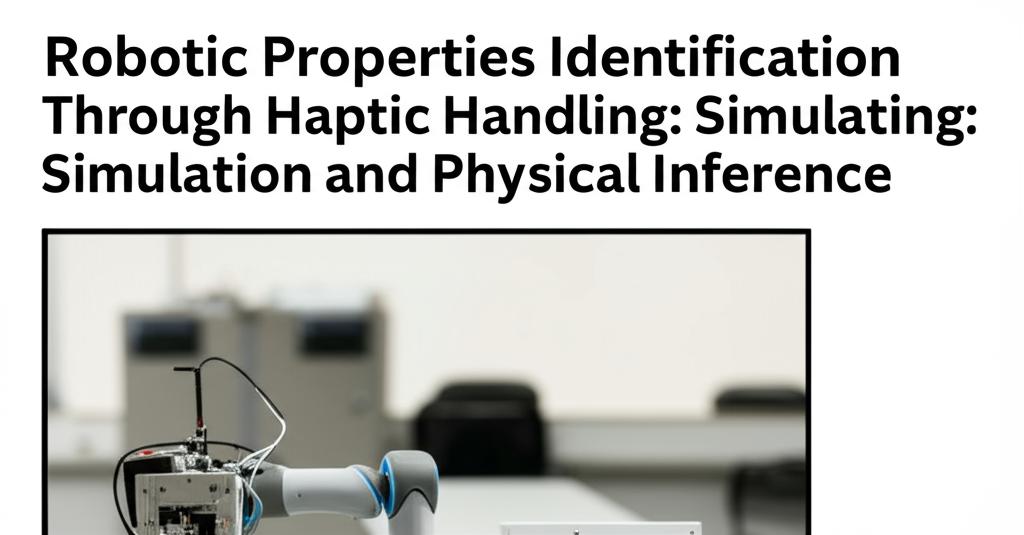Recent advancements are enabling robots to identify an object's characteristics, such as weight and softness, simply by handling it. This emerging technology leverages a robot's internal sensors and sophisticated simulation techniques, eliminating the need for external cameras or complex measurement tools.
A notable development in this field comes from researchers at MIT, Amazon Robotics, and the University of British Columbia. They have devised a method that allows robots to learn about an object's physical properties by picking it up and gently shaking it. This approach relies on proprioception – the robot's ability to sense its own movement and position in space – using data from its joint encoders. These sensors detect the rotational position and speed of the robot's joints during movement. By analyzing these internal signals, the system can accurately estimate properties like mass within seconds.
The core of this technique involves a simulation process that models both the robot and the object. An algorithm "observes" the robot-object interaction and uses the joint encoder data to work backward and determine the object's properties. For instance, if a robot applies the same amount of force to two different objects, a heavier object will move more slowly than a lighter one. The system utilizes "differentiable simulation," which allows the algorithm to predict how slight changes in an object's properties (like mass or softness) affect the robot's final joint positions. When the differentiable simulation aligns with the robot's actual movements, the system has successfully identified the correct property. This method is data-efficient, robust enough for various unseen scenarios, and performs comparably to more complex methods that incorporate computer vision, all while being more cost-effective as it doesn't require additional components like tactile sensors. NVIDIA's Warp library, an open-source tool supporting differentiable simulations, was used to build these simulations.
This approach holds significant promise for various applications, especially in situations where visual systems might be ineffective, such as sorting items in low-light conditions or clearing debris in a collapsed building. The long-term vision is to empower robots to explore their environments, interact with objects, and autonomously learn their properties. This could revolutionize robot learning, enabling them to quickly acquire new manipulation skills and adapt to dynamic surroundings.
Beyond inferring basic properties like mass and softness, research is also exploring how robots can identify more nuanced characteristics. For example, some systems are being developed to recognize textures and even clinical features through haptic feedback. This involves using specialized tactile sensors, including bimodal sensors capable of quantitatively measuring both softness and texture. Machine learning algorithms play a crucial role in processing the data from these sensors to identify object properties.
Furthermore, inspiration from biological systems, like the flexible neck of an ostrich, is informing the development of haptic perception systems. These systems leverage the dynamics of flexible structures to discriminate object properties and retain that information through behavior, enabling rapid learning and real-time inference.
The integration of haptic data with other sensing modalities, such as vision and even auditory cues, is another active area of research. Vision-Language Models (VLMs) are being explored to not only recognize objects but also infer their material properties, which can then be translated into haptic feedback for more realistic interactions in virtual or augmented reality, as well as for robotic applications.
The efficiency of haptic object identification is also a key consideration. Researchers are working on algorithms that can determine the optimal grasping points on an object to obtain the most distinguishing information, thereby reducing the number of grasps needed for identification. This involves constructing object descriptions that link spatial and haptic information and using techniques like information gain to guide the exploration process.
Overall, the field of robotic property identification through haptic handling is rapidly evolving. By combining advanced simulation techniques, novel sensor technologies, sophisticated machine learning algorithms, and insights from biology, researchers are paving the way for robots that can understand and interact with the physical world in a more human-like and intelligent manner.

